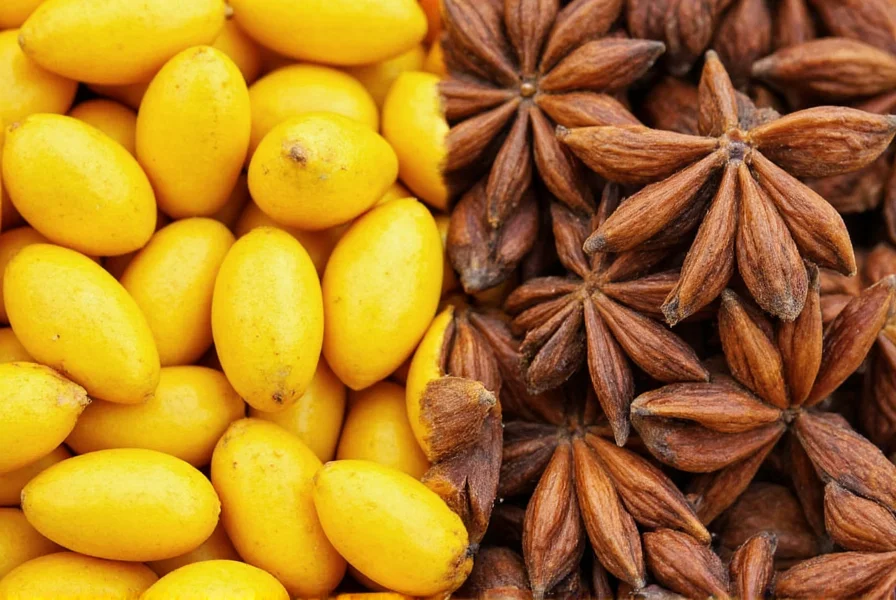The yellow anise tree, scientifically known as Illicium parviflorum, belongs to the Schisandraceae family and should not be confused with the edible star anise (Illicium verum) used in cooking and traditional medicine. This common misidentification poses serious health risks, as the yellow anise tree contains toxic compounds that can cause vomiting, seizures, and neurological damage.
Botanical Characteristics of Yellow Anise Tree
Illicium parviflorum grows as a dense, multi-stemmed evergreen shrub reaching 10-15 feet in height under optimal conditions. The plant features:
- Glossy, lance-shaped leaves (2-4 inches long) with a distinctive anise-like fragrance when crushed
- Small, yellow-green flowers (1-1.5 inches diameter) that bloom in spring
- Fruit structures resembling star-shaped pods, though less defined than true star anise
- Smooth, gray bark on mature stems
Native to USDA hardiness zones 7-9, this plant thrives in moist, acidic soils with partial shade. It's commonly found in swamp margins and forest understories throughout Florida, Georgia, and parts of Alabama and South Carolina. The yellow anise tree identification becomes particularly important for foragers and gardeners in these regions.
Yellow Anise Tree vs Star Anise: Critical Differences
| Characteristic | Yellow Anise Tree (Illicium parviflorum) | Star Anise (Illicium verum) |
|---|---|---|
| Native Region | Southeastern United States | China and Vietnam |
| Flower Color | Yellow-green | White to pale yellow |
| Fruit Shape | Less defined star shape, 6-8 points | Prominent 8-point star |
| Edibility | Highly toxic | Safe for culinary use |
| Primary Compounds | Knullidine, anise oil (toxic) | Anethole (safe) |
Safety Concerns and Toxicity
The most critical aspect of yellow anise tree information involves its toxicity. All parts of Illicium parviflorum contain knullidine and related compounds that affect the nervous system. Ingestion can cause:
- Severe gastrointestinal distress within 30-60 minutes
- Muscle tremors and convulsions
- Respiratory difficulties
- Potentially fatal neurological effects
Children and pets are especially vulnerable to yellow anise tree poisoning. The plant's aromatic leaves and attractive fruit often tempt curious individuals. Unlike edible star anise which contains anethole (the compound giving licorice flavor), yellow anise produces different chemical compounds that are dangerous to humans.

Non-Culinary Uses and Landscaping
Despite its toxicity, the yellow anise tree has value in appropriate contexts. Landscape architects sometimes incorporate it into native plant gardens for:
- Erosion control along waterways
- Wildlife habitat (birds use it for nesting)
- Ornamental value with year-round glossy foliage
- Natural pest deterrent (insects avoid it)
Gardeners considering yellow anise tree growing conditions should note it prefers partial shade and moist, acidic soil. It's relatively low-maintenance once established but requires careful placement away from areas where children play. The plant's yellow anise tree safety concerns make it inappropriate for edible landscapes or near kitchen gardens.
Proper Identification Techniques
Accurate yellow anise tree identification prevents dangerous confusion with edible varieties. Key distinguishing features include:
- Flower structure: Yellow-green flowers with tepals arranged in whorls rather than distinct petals
- Fruit characteristics: Less defined star shape with 6-8 points compared to the prominent 8-point star of edible anise
- Leaf arrangement: Spiral pattern along stems rather than opposite arrangement
- Aroma test: Crushed leaves emit a faint anise scent that turns unpleasant with prolonged exposure
When in doubt about yellow anise tree vs star anise, consult a certified botanist or horticulturist. Never rely solely on online images for plant identification when toxicity is involved. The consequences of misidentification with yellow anise tree can be severe.
Growing Yellow Anise Tree Responsibly
For those interested in cultivating this native species for ornamental purposes, proper yellow anise tree growing conditions include:
- USDA hardiness zones 7-9 (marginal in zone 6 with protection)
- Partial shade to full shade (intolerant of hot afternoon sun)
- Consistently moist, acidic soil (pH 4.5-6.0)
- Protection from strong winds which damage delicate branches
Propagation typically occurs through semi-hardwood cuttings taken in summer. Seeds have low germination rates and require stratification. Gardeners should always label plants clearly with both common and scientific names to prevent accidental ingestion. Understanding yellow anise tree characteristics helps ensure safe cultivation practices.










 浙公网安备
33010002000092号
浙公网安备
33010002000092号 浙B2-20120091-4
浙B2-20120091-4